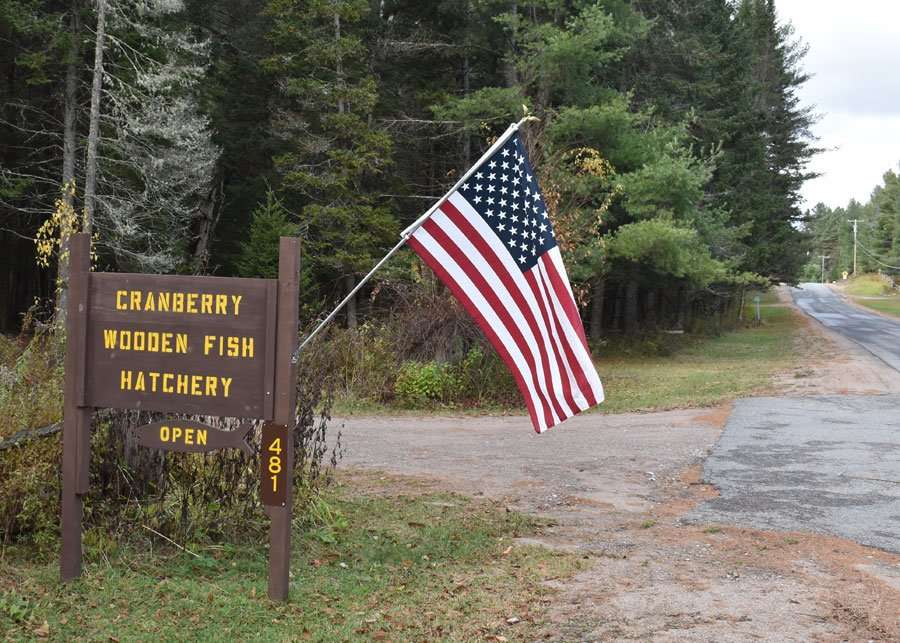
Cranberry Lake carver has ‘hatched’ countless fish, bird decoys
By Tom French
When I first saw the sign for the Wooden Fish Hatchery along the Tooley Pond Road, I was surprised. I’d never heard of it. The sign said open, so I stopped in for a tour. Imagine my surprise when I discovered it was truly a hatchery for wooden fish.
Bob Jones, the owner of the “hatchery” along with his wife Linda, admits the sign looks like a state sign. “Our neighbors said, ‘What the hell is the state putting in now?’” he quipped.
Bob first began carving in the early 1950s while growing up in Point Pleasant, New Jersey. Now 81, he learned the craft from Lloyd Johnson when he was 13.
“There were eight of us that used to hang out together. We wanted to hunt, and we couldn’t afford decoys, and he was one of the guy’s father, so he showed us how. He was one of the best carvers in the country.”
One of Johnson’s decoys, a sora rail, sold for $2,000 in 2018.
Beginning in 1961, Bob worked as a conductor on the Pennsylvania Railroad (later the Penn Central). He continued carving, purchased production machines, and opened a decoy shop on the side along with a small cedar mill. After 20 years, he left the railroad to carve and mill full-time, but sold the decoy business in 1989 to purchase a large mill in Pennsylvania.
“It was a huge operation – all kiln dried. We were doing about a million-and-a-half feet of white pine and planing it for furniture companies down south and out west, but I missed the decoys, so we got back into it with the fish on the side.”
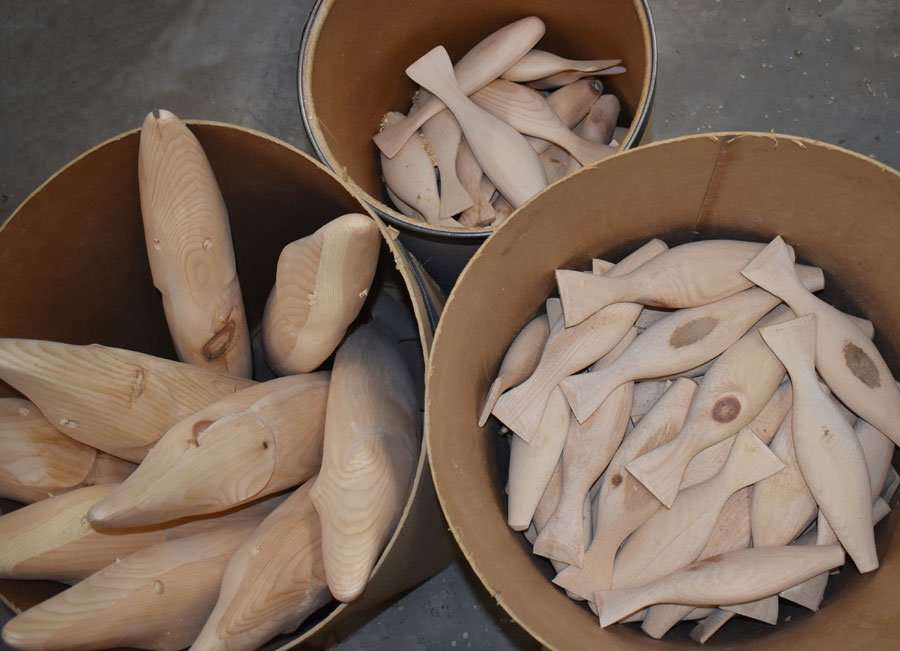
Fish, literally, by the barrel in a number of species including brown trout, rainbow, pike, and perch. The sunfish is especially recognizable, though Bob easily distinguishes the bass from the salmon and all the varieties he carves.
Each fish begins as a hand carving which is then cast in aluminum to create a three-dimensional template for the duplicating lathes. The same is true for the birds that Bob makes – herons, swans, owls, and ducks too numerous to count. Bob’s birds radiate their own personality through a twist of the head or brush stroke. The herons have an especially unique expression, hand painted so that each has its own character.
Once a template is cast, it can be loaded into one of Bob’s lathes which follows the curves to reproduce an exact replica in wood. Fish can be hatched in one step, but larger decoys have multiple pieces such as necks and heads, and many have a two-piece body laminated together in a large glue press that Bob purchased from a friend.
“His dad had a carving business in the thirties. I asked him if he knew anybody with a glue press. He said, I think my grandfather buried one in a wall. So he punched a hole in the wall and here it set, inside the wall, because it was so heavy he didn’t want to move it.
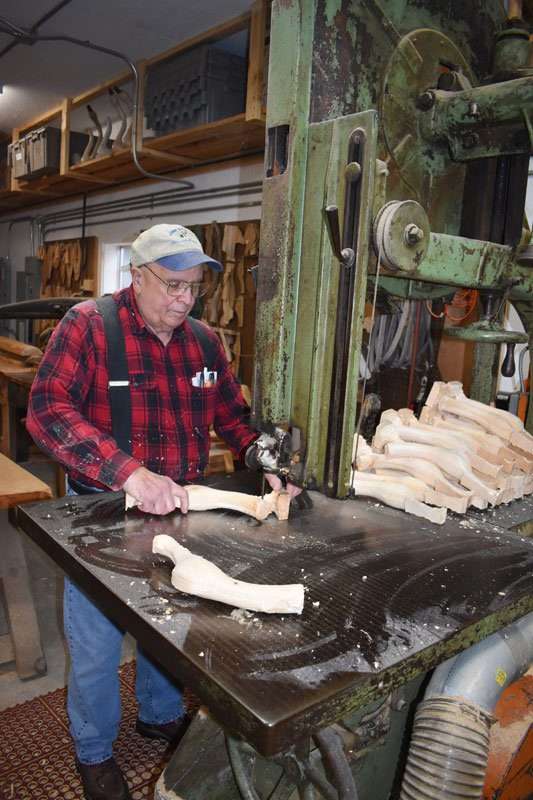
Bob purchased most of his equipment used. The largest weighs three tons, the smallest almost half a ton. One was previously used to turn furniture, but has been adapted to fish.
Bob explains one of the machines that can turn four pieces at a time. “The (aluminum) cast and wood blanks turn on a chuck while the cutter blades follow the piece and the carriage moves ahead slowly. The whole process takes about 10 minutes.”
In 1997, Bob injured his leg from a fall down a set of stairs. Laid up for a year, he and Linda sold the mill business and moved to Waddington where they bought a motel which included a building for his shop. A few years later, they sold the motel for a 300-acre farm up the road where he had a bigger shop. When the field work became too much, they found the property in Cranberry Lake.
Bob shows me his paint shop with its view of the Oswegatchie River. “I make my own stains. It’s a secret (recipe). For 40 years people have been trying to find out what it is. They’ll talk to me for an hour then pop the question to catch me asleep.”
Bob and Linda have traveled to shows for decades, including the Clayton Decoy Show which they first attended in 1973. The day I was visiting, they were preparing for a show in western New York where 80,000 people were expected.
“We used to do shows from here to Santa Rosa – Las Vegas, Indianapolis. Columbus. Tampa, Providence, Poconos, all over the country. But now, at my age, I just stay in New York.”
Fish blanks
His decoys and fish developed a reputation. Silver Dollar City, a theme park in Branson, Missouri, bought a bunch of fish for its Huck Finn River Blast water ride. A café in Miami bought over 50 to hang from the ceiling, and the US Marine Corps took a bunch for a children’s museum near Quantico.
“People google ‘fish blanks,’” Linda says. “And we come up number one.”
Artists buy the blanks to paint and sell. Schools order them for art classes, and non-profits organize fundraisers. “A Connecticut Watershed Association took eighty fish and made six or eight thousand dollars.”
Cranberry Lake’s Annual Art Show has included dozens painted by local people which were auctioned off to raise money for a scholarship fund at Clifton Fine Central School. Bob and Linda sell paint packets with patterns to show how to paint the fish. “Buy a fish and a pattern, then take it home to paint yourself,” Linda says. “Just like making a dress.”
Some of the kits include fins and eyeballs.
Bob made a decoy from a piece of the Wanakena Bridge after it was destroyed by an ice jam in 2014. It raised $6,210 for the bridge rebuild.
Linda says the lady that bought it used to walk over the bridge. “She said, ‘I don’t know what I was doing. My hand just kept going up.’”
BECOME AN EXPLORER: Your support helps power nonprofit journalism for the Adirondacks
When Linda taught school in New Jersey, President Bush Sr. gave a speech to the teachers. The school asked Linda if they could give one of Bob’s ducks as a gift.
“The Secret Service asked what was in the bag. So I showed him and said ‘A duck,’ and he said, ‘Oh, he’s going to keep this one.’”
Two weeks later, she received a thank you note from the President that is proudly displayed in the store.
I asked Bob how many fish he makes every year, he said, “I don’t keep track. I make a lot.”
The Cranberry Wooden Fish Hatchery is located on the Tooley Pond Road, 2¼ miles north of Route 3, near Cranberry Lake. They’re generally open every day, but call ahead (315-848-4223) in the off-season. Bob offers tours of his woodshop to everyone that stops.
Their website, stlawrenceriverdecoys.com, uses the business name from before they moved to Cranberry Lake in 2016. His work is also available at two locations in Lake Placid: Adirondack Decorative Arts & Crafts and the Adirondack Trading Company.
Don’t miss a thing
Sign up for our weekly “Adk News Briefing” newsletter, that highlights the week’s top stories on our two websites: adirondackexplorer.org and adirondackalmanack.com.
Click here to see our full slate of weekly and daily newsletters
"fish" - Google News
December 04, 2021 at 05:18PM
https://ift.tt/3Gc28x8
Fish in a Barrel - Adirondack Explorer
"fish" - Google News
https://ift.tt/35JkYuc
https://ift.tt/3feFffJ
Bagikan Berita Ini
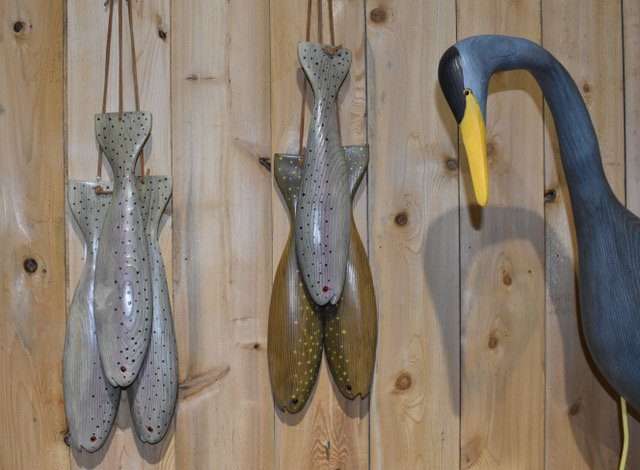
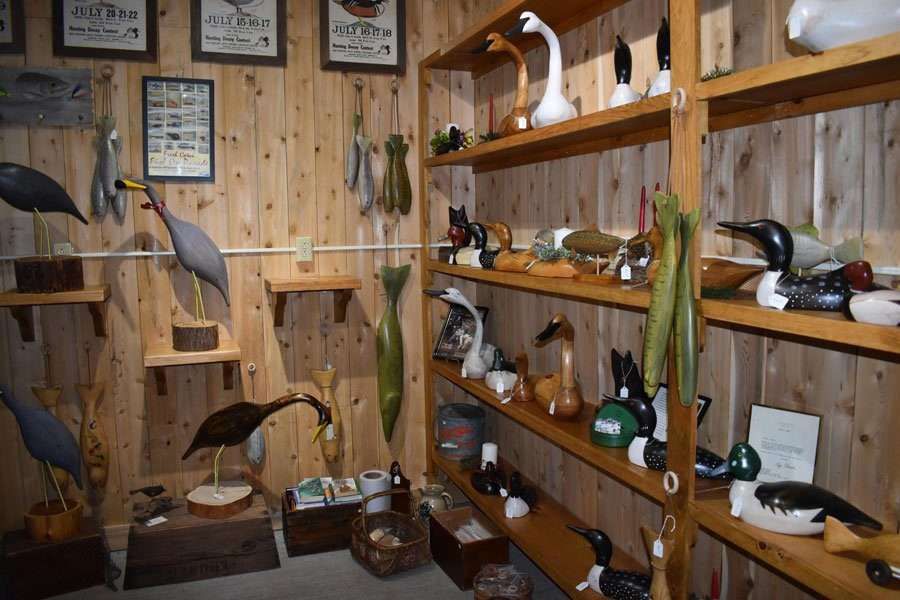















0 Response to "Fish in a Barrel - Adirondack Explorer"
Post a Comment